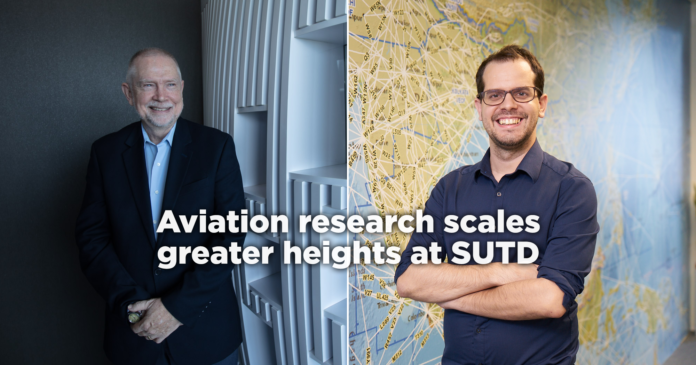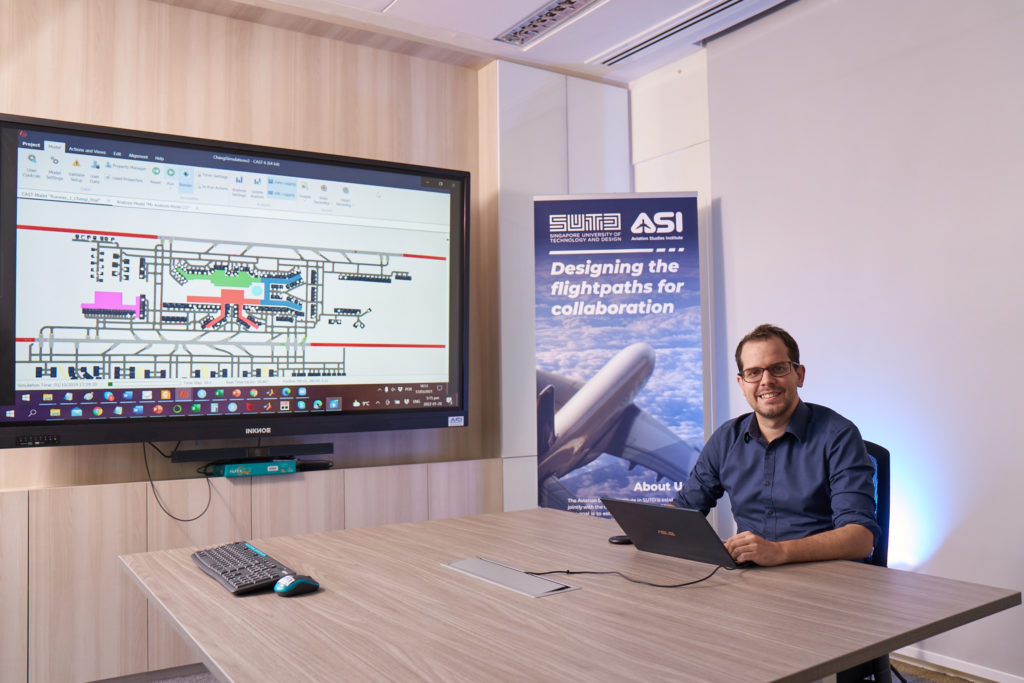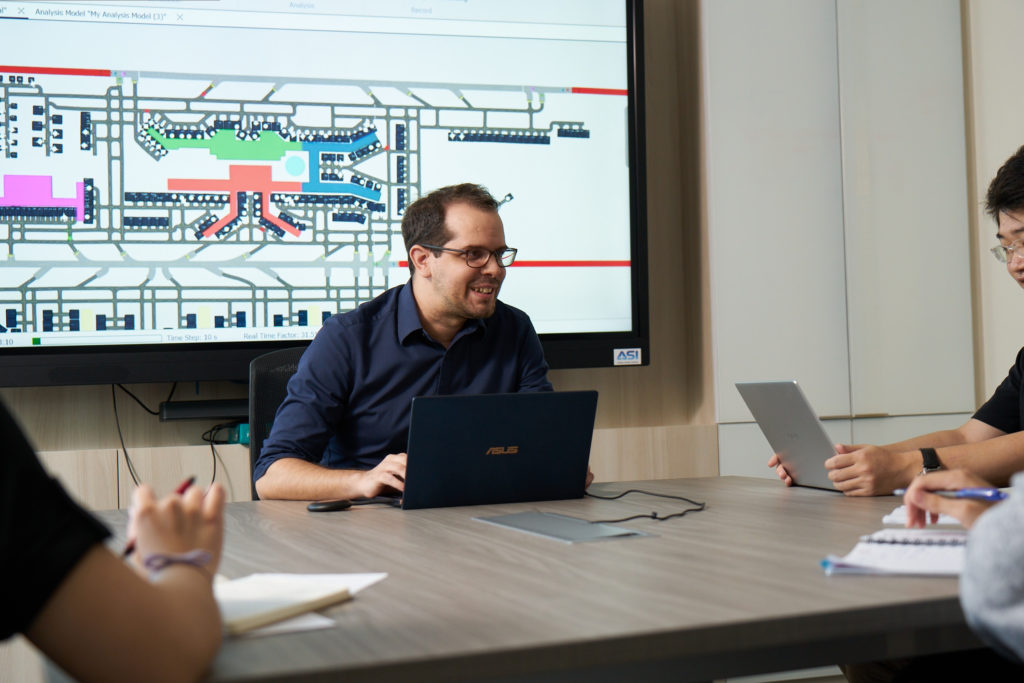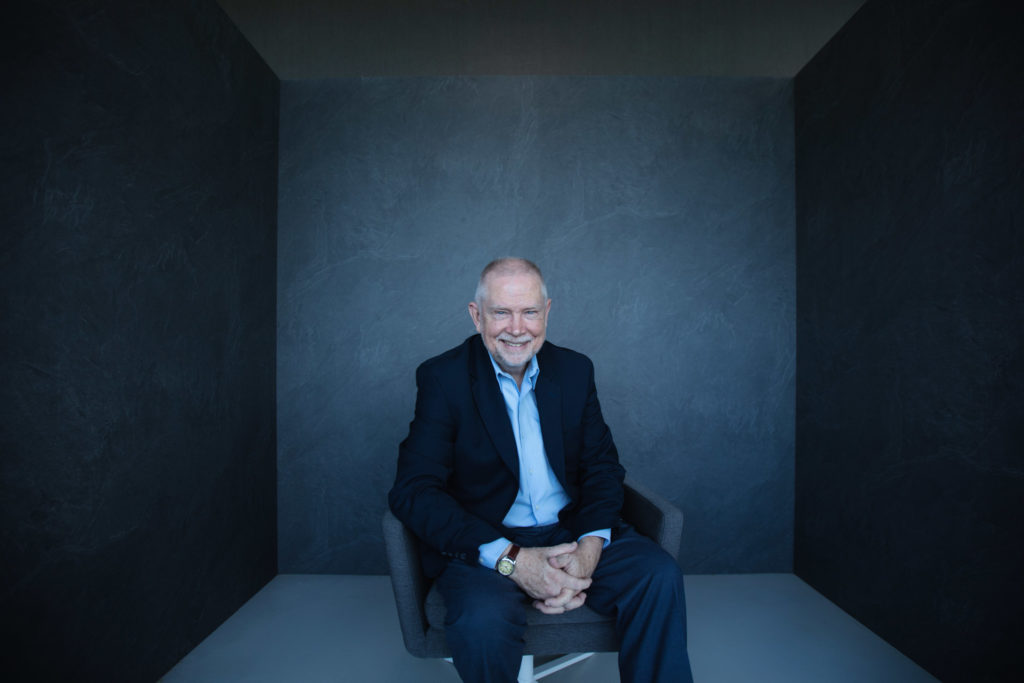Even as the COVID-19 pandemic grounded aircraft worldwide, aviation research at SUTD continues to take flight—with new tools for allocating airport slots, predicting the impact of extreme weather events and more.
Given the advances in commercial and space flight over the years, it’s easy to forget the first successful flight in history happened less than a century ago—specifically, in 1903. Since then, the aviation industry has reached greater heights with technological advances improving efficiencies and with the introduction of transatlantic jets and wide-bodied aircraft. All of which led to steady rates of growth in the industry.
The COVID-19 pandemic, however, brought the world to a virtual halt in 2020—and with it, many of the planes that had shuttled people across cities and continents. For instance, Singapore’s Changi Airport—once one of Asia’s busiest transportation hubs—saw a 96% reduction in passenger air traffic in 2021 versus 2019.
Find out how SUTD Assistant Professor Nuno Ribeiro uses machine learning tools to reduce imbalance between demand and capacity at congested airports.
But as nations cautiously reopen their borders, the aviation industry will once more have to grapple with issues like airport congestion, the call for greater fuel efficiency and reducing aviation’s environmental impact. Heeding the call to address these concerns are researchers at the Singapore University of Technology and Design’s (SUTD) Aviation Studies Institute (ASI).
Set up in collaboration with the Civil Aviation Authority of Singapore, the ASI aims to be a world-leading centre of aviation policy research and thought leadership, advancing the development of aviation in the Asia-Pacific region. Here’s a bird’s-eye view of the ongoing research at ASI and SUTD.
Adapting aviation to changing circumstances
With SUTD conveniently located just beside Changi Airport, ASI is well-positioned to explore ongoing or anticipated aviation issues. As passenger flights begin to pick up once more through the vaccinated travel lanes, researchers like Assistant Professor Nuno Ribeiro (below) from the Engineering Systems and Design (ESD) pillar are closely studying how airport capacity management can be improved in a post-COVID world.
“The main challenge comes from the uncertainty in air travel demand underlying the transition to the new normal,” said Asst Prof Ribeiro. According to him, this uncertainty stems from several questions, ranging from when and how fast recovery will occur to which airlines will survive.
“Given these uncertainties, allocating airport slots is challenging and very ineffective in this current situation,” he added. After all, slot allocation is a complex process—involving the allocation of a finite number of slots across thousands of airline requests while complying with administrative rules and the directives of various stakeholders.
Accordingly, Asst Prof Ribeiro and his team are developing tools meant to support airport managers in deciding which flights to schedule and when to schedule them. To optimise slot allocation decisions, their tools combine predictive and prescriptive analytics ranging from mathematical optimisation to machine learning.
Concurrently, the team is applying machine learning methods to understand how different operating conditions affect air traffic operations and airfield capacity, such as specific weather events. “Climate change will lead to more frequent extreme weather conditions,” explained Asst Prof Ribeiro, adding that lighting is one of the more disruptive weather events in aviation. With Singapore said to be the world’s lightning capital, having predictive tools in place can help local air traffic controllers better deal with such situations.
Reimagining airports in the new normal
Beyond the crucial work of slot allocation and air traffic management, ASI is also exploring other aspects of aviation—made possible by the institute’s interdisciplinary approach. “We can easily pull together faculty from diverse backgrounds to consider issues that demand holistic approaches,” stated Professor Peter Jackson (below), ASI Director and Head of the ESD Pillar.
For example, SUTD is currently looking into the airport experience—namely, how passengers and employees alike experience the airport in the pandemic settings. Led by Professor Lucienne Blessing from the Engineering Product Development pillar, the researchers have embarked on a worldwide survey to assess the changes in airport experience caused by COVID-19. The survey will touch upon aspects like check-in, the use of automated tools and airport accessibility.
Looking forward, the institute has also commissioned a white paper discussing the future of Southeast Asia’s major hub airports in cities ranging from Jakarta to Bangkok. “A fundamental question is: why do we care about the hub status of airports?” remarked Prof Jackson. “The reason is primarily economic: the presence of a large airport drives economic development in the long run.”
All in all, these efforts give a glimpse into the various research projects taking flight at the ASI and SUTD. “We are pursuing a two-pronged approach to the development of ASI. The first is to progressively build our capabilities in optimisation, simulation, data fusion and machine learning to support aviation research,” said Prof Jackson.
“The second is a vision to integrate all areas of air traffic flow management to balance demand and supply for limited network resources with much greater efficiency. We have made considerable progress in developing this vision through flight schedule optimisation, network capacity planning, passenger choice modelling and collaborative decision-making. We are entering the second phase of this development which will feature greater integration across all these areas,” he concluded.
This article first appeared in ASPIRE, SUTD’s research e-newsletter.

































